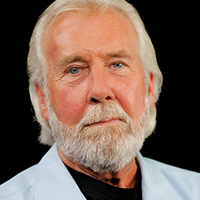15 Ways to Improve Your Cash Flow Now

15 Ways to Improve Your Cash Flow Now
By Howard Fletcher
Cash management theory and techniques are well understood and practiced by treasury managers in large corporations. They use sophisticated models and cash management tools that allow them to predict and manage cash. Many of these are beyond the reach or need of small companies. But there are many things even small companies can do at minimal cost to improve cash flow. Below are fifteen ways companies can improve their cash flow quickly.
1. Cash budget and forecast – Prepare a cash budget and weekly cash forecast to track actual cash in and out against projected cash in and out. These tools will enable you to better control where the cash is going and prioritize future cash expenditures.
2. Purchasing – Centralize purchasing for the firm or at least within major business units. This reduces administrative costs. Standardized purchasing policies and procedures promote efficiency and help prevent duplicate purchase orders. Purchase order forms should be standardized. Copies of all purchase orders should be forwarded to Accounts Payable and Receiving Departments immediately upon creation. When negotiating with vendors negotiate the price first, then terms. The purchasing department should coordinate with accounts payable to maximize leverage on the vendor.
3. Vendors – Prevent costly supply disruptions which can bring sales and cash flow to a halt. Use multiple suppliers for key items when possible. Know the suppliers’ financial condition so you can anticipate potential disruptions due to financial stress. Signs of supplier financial trouble include calls to the supplier not being returned, consistent order errors or deterioration in quality of merchandise, late delivery of merchandise and supplier employees inquiring about job openings.
4. Receiving – Ensure Receiving has a copy of the purchase order at the time goods are received. Use standardized processes to minimize paperwork errors in the receiving department. All goods should be examined immediately upon arrival and checked against the purchase order. Received goods should immediately be committed to inventory and entered into the accounting system. Shipping documents should be forwarded to Accounts Payable immediately upon receipt and inspection of the goods.
5. Inventory – Turn stale or slow-moving inventory into cash by discounting to move quickly, having a warehouse sale or returning the inventory to the vendor. Simply writing down impaired inventory can save cash even if it is not sold because a book loss is created that will reduce income taxes now or in the future.
6. Just-In-Time Inventory – Employ to the extent practical a just-in-time inventory system. Such systems can free up cash that otherwise would be tied up in inventory. The benefits include reduced inventory levels and increased turnover, reduced purchasing lead time and safety stocks, increased scheduling flexibility, lower investment in factory and warehouse space, reduced obsolescence, reduced scrap and rework, and reduced operating expense. Potential negatives of using such systems include accurate order lead time planning, inflexible suppliers in terms of changes in amounts and delivery dates, and additional costs as a result of inventory overages or shortages caused by inflexible suppliers. Overages tie up cash while shortages reduce sales, profits and cash flow
7. Accounts payable – A/P processing should be centralized for the firm or at least within major business units. Policies and procedures for handling A/P should be standardized across the company. These policies and procedures should prevent overpayments, duplicate payments or payments to fictitious vendors. Issue checks from small banks, thrifts or credit unions in remote locations to improve mail and clearing float. With electronic clearing, this is now less important but it could help to pick up one or two days additional float.
8. Vendor invoices – Process vendor invoices immediately upon receipt. They should be compared with the shipping documents and original purchase orders to ensure that amounts being billed are consistent with the goods ordered and received. Only then should they be entered into the A/P system. Avoid rush checks because they disrupt workflow and are the leading cause of duplicate payments. Coordinate A/P with purchasing to maximize leverage on the vendor. Prompt payment can sometimes win a better price or discount.
9. Taking discounts – Take discounts when available if the incremental cost of capital is less than the annualized yield equivalent of the discount. The formula to determine the true cost of a discount is:
(Percent discount x 365)/days gained in cash receipt
Therefore, if the terms are 2% 10, net 30 then:
.02 x 365/20 = 7.3/20 = 36.5%
If a company’s incremental cost of capital is less than 36.5% the discount should be taken.
10. Accounts receivable – Credit checks each new customer and credit check all customers at least once each year. Monitor non-payment aggressively and don’t be afraid to cut a customer off for non-payment. Call delinquent customers daily and do not be afraid to use COD terms.
11. Collections – Reduce administrative costs by centralizing collection efforts within the firm or at least within major business units. This means employing a dedicated collection staff. Have the staff call customers frequently to inquire about payment if the payment is late. The customer will not be offended if it is already late. Process all customer remittances immediately – don’t allow them to be put into a drawer until the next day. Deposit collections daily if not using a lockbox.
12. Customer remittances – Make it easy for the customer to pay. Provide return envelopes with invoices. Get customer authorization to make automatic debits. Make arrangements to accept wire transfers, credit card payments and depository transfer checks.
13. Offering discounts – Discounts are an effective way to accelerate cash receipts but can be expensive. The key is to calculate the appropriate discount to offer. The annualized cost of the discount should be less than the company’s incremental cost of capital. Remember, a 2% discount taken 20 days before the payment is due equals a 36.5% annualized percentage rate. If the company’s incremental cost of capital exceeds 36.5% then the discount should be offered. Offering an enticing discount to pay early is clearly expensive. It is therefore critical that customers be prevented from taking the discount when paying after the early payment date.
14. Using Credit Lines – A preferable alternative to accelerate cash flow through discounts may be to borrow against the accounts receivable under a working capital line of credit. For most companies, this would cost less than 36.5% per annum. However, many companies do not have access to a line of credit and even some that do would prefer to offer the discount and preserve availability under the line of credit for inventory financing or unexpected working capital requirements.
15. Cash management services – Third-party services are provided by banks as a means of accelerating the collection, deposit, and investment of your funds. These services generally consist of lockboxes, operating accounts, sweep accounts, on-line reporting and investment services. More recently banks are offering in-house check scanning and on-line deposit services as an alternative to lockboxes. Lockboxes and in-house check scanning accelerate the deposit and availability of customer payments. Every night deposits in excess of a pre-determined minimum balance are “swept” into a sweep account for overnight investment. Earnings on the invested funds are then applied to the cost of other services provided by the bank (item charges, wire transfers, stop payments, etc.). This minimizes excess cash balances and maximizes investment income. On-line information systems give the owner or cash manager access to daily activity.
These fifteen things cannot overcome a systemic inability to produce cash sufficient to fund day to day operations in the long run. Eventually, trade credit and credit lines will be unavailable if the company at its root is not economically viable. But they can help make the most of the cash that is available.
Howard Fletcher is an author, speaker and consultant who helps emerging companies become successful growth stories. Mr. Fletcher has been CEO of five companies and COO of three others. He has been a senior executive of a major international corporation. Mr. Fletcher has a Masters Degree in International Management and a Bachelors Degree in Finance, both from the University of Southern California.
We hope you found this article about “15 Ways to Improve Your Cash Flow Now” helpful. If you have questions or need expert tax or family office advice that’s refreshingly objective (we never sell investments), please contact us or visit our Family office page or website www.GROCO.com.
To receive our free newsletter, contact us here.
Subscribe our YouTube Channel for more updates.

Alan Olsen, is the Host of the American Dreams Show and the Managing Partner of GROCO.com. GROCO is a premier family office and tax advisory firm located in the San Francisco Bay area serving clients all over the world.
Alan L. Olsen, CPA, Wikipedia Bio

GROCO.com is a proud sponsor of The American Dreams Show.

The American Dreams show was the brainchild of Alan Olsen, CPA, MBA. It was originally created to fill a specific need; often inexperienced entrepreneurs lacked basic information about raising capital and how to successfully start a business.
Alan sincerely wanted to respond to the many requests from aspiring entrepreneurs asking for the information and introductions they needed. But he had to find a way to help in which his venture capital clients and friends would not mind.
The American Dreams show became the solution, first as a radio show and now with YouTube videos as well. Always respectful of interview guest’s time, he’s able to give access to individuals information and inspiration previously inaccessible to the first-time entrepreneurs who need it most.
They can listen to venture capitalists and successful business people explain first-hand, how they got to where they are, how to start a company, how to overcome challenges, how they see the future evolving, opportunities, work-life balance and so much more..
American Dreams discusses many topics from some of the world’s most successful individuals about their secrets to life’s success. Topics from guest have included:
Creating purpose in life / Building a foundation for their life / Solving problems / Finding fulfillment through philanthropy and service / Becoming self-reliant / Enhancing effective leadership / Balancing family and work…

MyPaths.com (Also sponsored by GROCO) provides free access to content and world-class entrepreneurs, influencers and thought leaders’ personal success stories. To help you find your path in life to true, sustainable success & happiness. It’s mission statement:
In an increasingly complex and difficult world, we hope to help you find your personal path in life and build a strong foundation by learning how others found success and happiness. True and sustainable success and happiness are different for each one of us but possible, often despite significant challenges.
Our mission at MyPaths.com is to provide resources and firsthand accounts of how others found their paths in life, so you can do the same.
Early Detection Saves Lives with Steve Marler
Steve Marler, Founder of Advanced Longevity discusses how early detection can save lives and overcoming a broken healthcare system on Alan Olsen‘s American Dreams Show. Transcript: Alan Olsen Welcome to American Dreams. My guest today is Steve Marler. Steve, welcome to the show. Steve Marler Thank you. It’s great to be here. Alan Olsen So Steve,…
Preserving My Family’s Life’s Work & Legacy
Tom Chatham, Chairman of Chatham Created Gems & Diamonds, Inc., discusses preserving his family’s legacy and life’s work on Alan Olsen‘s American Dreams Show. Transcript: Alan Olsen Welcome to America dreams. My guest today is Tom Chatham. Welcome to today’s show. Tom Chatham Thank you glad to be here. Alan Olsen So, Tom, we’ve had…
Mastering Business Growth with Howard Shore
Howard Shore, Founder and CEO of Activate Group Inc. discusses managing, even mastering, business growth and the challenges growing quickly can present on Alan Olsen‘s American Dreams Show. Transcript: Alan Olsen Welcome to American Dreams. My guest today is Howard Shore. Howard, welcome to today’s show. Howard Shore Alan, thank you for having me. Alan…




